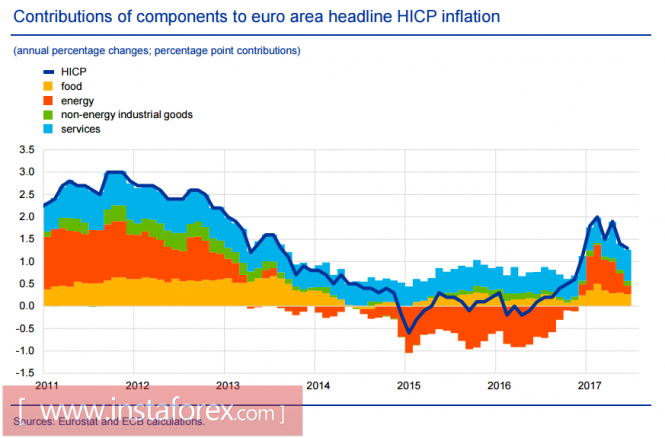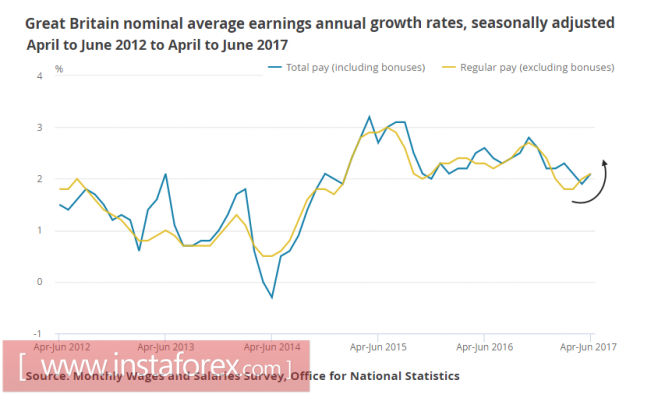Eurozone
The GDP growth in the euro area for the second quarter was slightly higher than expected. the adjusted annual growth estimate increased from 2.1% to 2.2%, which supports the euro.
According to the published report in August from the economic bulletin, there was a slowdown in the inflation for the second quarter but it is sure that the problem is only in the reduction of energy prices and partly in food products. The basic level of inflation remains confidently high, although this point seems rather controversial. As can be clearly seen in the graph below, the prices of the services sector were the main reason. The price dynamics of the group of industrial products in the non-energy sector has a noticeable lower price growth compared to the period of 2011/13 when the deflationary pressure on still quite strong.
The volume of imports of goods has declined and has become pronounced in the second quarter.
The ECB minutes of the meeting is also expected to be published today, which will be considered by the traders to look for possible hints in the internal discussion regarding the timing of the easing of the incentive program. Recent trends indicate that the concern of the ECB may even increase, as the industry and the export-oriented sector of the economy are under threat because of simultaneous pressure from several sides. In these conditions, there is no need to wait for hints to reduce the incentive program since the protocol will help to weaken the euro.
The likelihood of a correctional decline in EUR / USD pair is growing.
United Kingdom
The British pound has declined in reaction to weaker than expected data on consumer inflation. The price decrease in July was 0.1% with a year-on-year growth of 2.6%. Both indicators are worse than forecast.
At the same time, there are some positive points. The index of retail prices rose more than expected while the report on the labor market, published on Wednesday, showed a positive trend in most parameters. Applications for benefits have decreased in number and the unemployment rate also decreased from 4.5% to 4.4%. On the other hand, the average wage increased by 2.1%, which was better than forecasts and the level attained in June.

The latter parameter can serve as the basis for optimism since it will contribute to the growth of inflation, which also increases the probability of a rate hike by the Bank of England. This factor will give some support to the pound.
The data on retail sales for the month of July will be published today which can induce the market to move in any direction. Although expectations are moderately negative, experts expect weaker indicators than a month ago.
The pound continues to be under pressure, despite the fact that bulls on the dollar will not get together for a full-fledged offensive. The move towards 1.28 followed by a slide to 1.25 will most likely happen than the resumption of growth.
Oil
Commercial crude oil inventories from the U.S. fell by 1.9% or 8.9 million barrels. The decline has significantly exceeded the forecasts of experts.
The material has been provided by InstaForex Company - www.instaforex.com